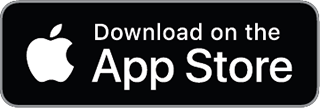Readme
Welcome! If you’re new to surf forecasting, check out this quick guide.
Forecast Table
The forecast table (the section on the page with all the numbers) is designed to pack as much information in the screen as possible. Although intimidating at first, it will help you make informed decisions about the waves faster, trust me :D. The table consists of roughly four sections, time and predictions, wind, waves, and tides:
🔮 Time and predictions section
Here we show the forecast thour and the overall surf quality prediction. This is determined based on the wave, wind and tide quality prediction. These individual predictions can be found on the forecast map.
💨 Wind section
The first row on the table (with the 💨 icon) shows wind speed, direction and gust. The more the wind speed the more aggressive the color (from blue, green, orange to red).
🌊 Wave section
The waves section consists of three rows, one for wave height and direction, one for period and one for wave energy. Our algorithm choices the "dominant wave". This is normally the first swell partition, but with heavy local storms it displays the wind waves. If that's the case, we display the numbers in italic and in gray.
🌒 Tide section
The tide section consists of a row with the actual heights per hour (measured at the half hour) and a table that displays the flow of the tide and the extremes (lows and highs).
Forecast map
The forecast map consists of arrows. These arrows represent all wave partitions (swell partitions and wind wave partition) and the wind. This allows you to see things like: a secondary swell or wind waves messes up the surf, or the wind is just a tick offshore so very surfable. Click a metric label in the bottom left to bring that arrow to the front — handy when arrows overlap.
Forecast Cheat Sheet
Short on time? Focus on wave energy. It’s the best single metric to gauge how big and powerful the waves will be.
Click any table cell to jump to that forecast hour. The map will update with forecast arrows, so you can see if wind and swell direction are lining up.
Use the table sidebar to switch units for height and speed.
Log your surf sessions to compare forecasts with real sessions and sharpen future predictions.
Models and Updates
Surfnerd blends multiple global and local wind and swell models using advanced interpolation and spatial techniques to create an "ensemble" forecast. Forecasts are refreshed hourly.
Surf Predictions
Our AI-driven algorithm scores surf quality, shown by green, orange, and gray dots. Each forecast hour is rated for wind, swell, and tide quality, then combined into an overall score. Here’s the scale:
Session logs also feed the algorithm — the more you log, the smarter your forecasts get.
With Surfnerd, no more "you should have been here yesterday"

